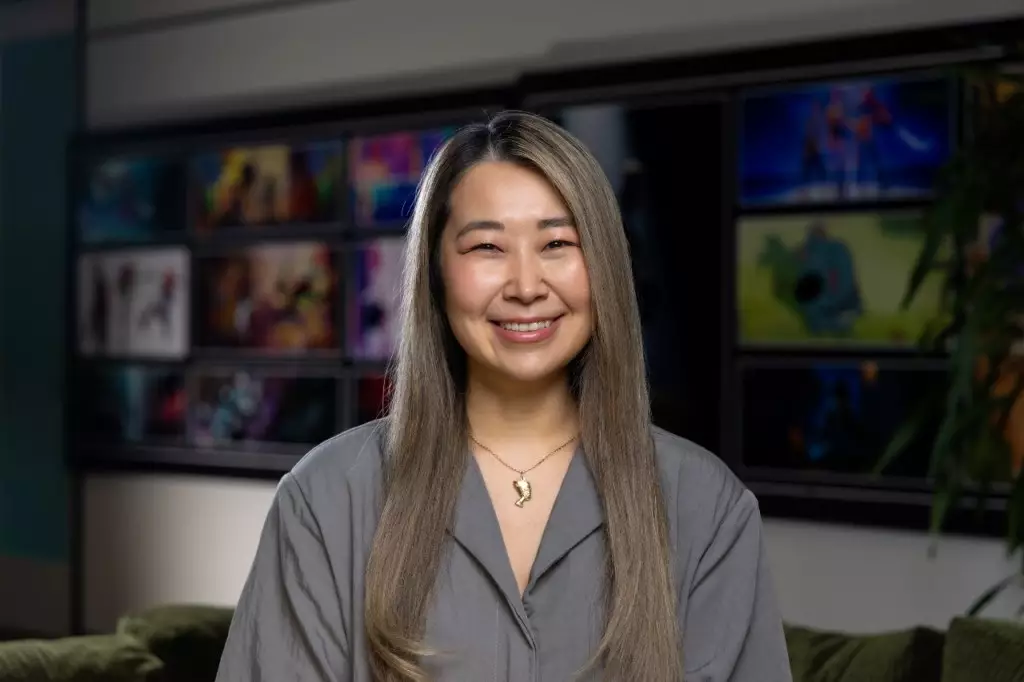Maggie Kang’s ambitious project, *KPop Demon Hunters*, exemplifies a daring fusion of traditional Korean mythology with contemporary pop culture, revitalized through spirited animation. Unlike standard animated features that often cater to a universal or Western-centric audience, Kang’s vision places Korean identity at the fore, showcasing its rich folklore and vibrant music scene. This approach isn’t merely aesthetic; it’s a statement of cultural pride and authenticity. Kang’s personal journey from Seoul to Toronto and her extensive Hollywood experience allowed her to craft a narrative that balances global appeal with local specificity. Her desire to tell an authentic Korean story, infused with the energy of K-pop, underscores a broader movement of cultural resurgence and international storytelling empowerment.
This film demonstrates that stories anchored deeply in specific cultures can transcend borders when they are told with sincerity and passion. Kang, by integrating elements like shamans and demonic folklore with modern-day Seoul’s bustling cityscape, emphasizes that cultural identity is alive, relatable, and dynamic. She resists the temptation to dilute her roots for mass appeal; instead, she harnesses them as a source of strength, creating a narrative that resonates globally while celebrating Korean uniqueness.
The Power of Music and Femininity in Heroic Archetypes
What unique value does *KPop Demon Hunters* bring to both animation and representation? Kang’s decision to cast Korean women as the central heroes is nothing short of revolutionary. These characters are messy, humorous, flawed, and powerfully human—attributes rarely celebrated in mainstream superhero narratives. Traditionally, female characters in animation often fall into archetypes of perfection or one-dimensional support roles. Kang deliberately shatters these stereotypes, presenting women who fight demons while also navigating everyday struggles, insecurities, and friendships.
Moreover, Kang explicitly embeds the cultural significance of music—particularly K-pop and shamanic singing—as core to the heroes’ supernatural powers. Historically, shamans used music to connect with spirits and ward off evil, a tradition dating back centuries. By doing so, she elevates music from mere entertainment to a potent spiritual and cultural tool. In a modern context, amid Seoul’s shimmering city lights, K-pop becomes more than a genre; it transforms into a force of empowerment, unity, and resilience. Kang’s insight that the film is a celebration of K-pop’s universal energy underpins her belief that cultural symbols can galvanize audiences worldwide and foster a sense of shared identity.
This approach challenges Western narratives that often focus on lone, invincible heroes. Instead, Kang champions community, friendship, and flawed protagonists, asserting that true strength lies in embracing imperfections and collective support. Her heroines embody authenticity and relatability, offering a fresh blueprint for future animated heroes—one that champions gender diversity, cultural pride, and emotional honesty.
Authenticity through Immersive Research
Kang’s commitment to authenticity is reflected in her meticulous research process. Her firsthand visits to Korea, excursions to folk villages, historic sites, and Seoul’s modern streets display a devotion to capturing the essence of Korean life. Handling authentic artifacts like traditional weapons and immersing herself in local cuisine allowed her to deepen her understanding of Korean culture intimately. Such details elevate the film from simple entertainment to a rich cultural artifact that respects its roots.
This dedication to authenticity is not merely superficial; it influences every aspect of the film—from visual design to storytelling. By involving Korean choreographers and musicians who are deeply embedded in the K-pop industry, Kang ensures that the music and dance segments resonate with genuine energy. This inclusivity and collaboration with Korean talent lend credibility and vibrancy to the film’s cultural tapestry.
Kang’s approach also underscores an important lesson for creators: cultural integrity enhances storytelling depth and audience engagement. When stories are rooted in real experiences and traditions, they gain a universal appeal rooted in authenticity rather than superficial stereotypes.
International Success and Cultural Diplomacy
The global reception of *KPop Demon Hunters* underscores the power of authentic storytelling. Its record-breaking viewership on Netflix and the success of its soundtrack on international charts demonstrate that audiences worldwide are hungry for stories that challenge Western hegemony and celebrate diverse heritages. The film’s commercial success, evident in its theatrical revenue and chart-topper songs like “Golden,” signals a significant shift in how animated narratives are conceived and marketed.
Kang’s acknowledgment that the film’s themes of friendship, perseverance, and inner strength transcend cultural boundaries illustrates her belief in universal human experiences. However, it is her persistent focus on Korean culture—as seen in her research trips and incorporation of traditional elements—that lends *KPop Demon Hunters* its unique flavor.
In an era where cultural globalization often risks homogenization, Kang’s work exemplifies how stories rooted in specific traditions and identities can find a worldwide audience. It’s a testament to the fact that authenticity and cultural pride can serve as potent tools in crafting compelling, commercially viable entertainment that also educates and empowers.
—
In creative endeavors, self-reflection reveals that perhaps my critique sometimes leans too heavily on theoretical ideals rather than practical validation. Nevertheless, *KPop Demon Hunters* exemplifies how a well-crafted, culturally rooted story can break barriers and redefine genre conventions. It underscores the importance of respecting and elevating cultural narratives, especially through modern mediums like animation, to inspire a more inclusive and appreciative global entertainment landscape.
